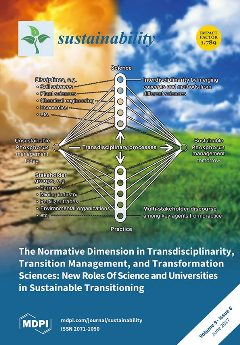Dune-interdune is the main landscape pattern of desert areas, such as the Horqin sandy land of Northeastern China. Exploring the temporal and spatial variation of the water balance is crucial for efficient vegetation restoration at the micro-landform scale. The SWMS-2D model was used to estimate the seasonal variations of the water balance including evapotranspiration, soil water storage changes, lateral flow and drainage, and to examine the effects of micro-landforms (i.e., the top, upper, down, and bottom positions of the dune slope, and the interdune lowland area) on these components from May to October 2013 and 2015. Results showed that the soil water content was sensitive to rainfall pulses, particularly large precipitation events. Over 70% of the total evapotranspiration occurred from June to August, with a maximum daily value of 6.56 mm. At a monthly scale, evapotranspiration was not synchronous with precipitation. The ratio of evapotranspiration to precipitation was 1.84, 0.39, 2.49, 0.93, 2.26, and 1.14 in May, June, July, August, September, and October 2013 (a wet year), respectively; and 2.40, 1.11, 0.69, 2.14, 1.07, and 1.11 in 2015 (a dry year), respectively. The components of the water balance were significantly different among different micro-landforms. Evapotranspiration of a lowland area was greater than that in other micro-landforms, and the value in the wet year (2013) was significantly greater than that in the dry year (2015). However, water consumption in the lowland area was similar in both years. At the top, upper, down, and bottom positions of the dune slope, the ratio of evapotranspiration to precipitation in the wet year (2013) was 96%, 97%, 86%, and 96%, respectively; while in the dry year (2015), the ratio was 103%, 103%, 88%, and 104%. Therefore, in the dry year, evapotranspiration was generally larger than precipitation, indicating that almost all water from precipitation was evaporated. The lateral flow of the root zone from top to bottom accounted for only a small portion of water budget at the growing season scale. The results could be generalized to other similar region with corresponding model calibration, and would help to reveal seasonal variations of water balance components under the local topography, climate, soil, and vegetation conditions.
Full article





